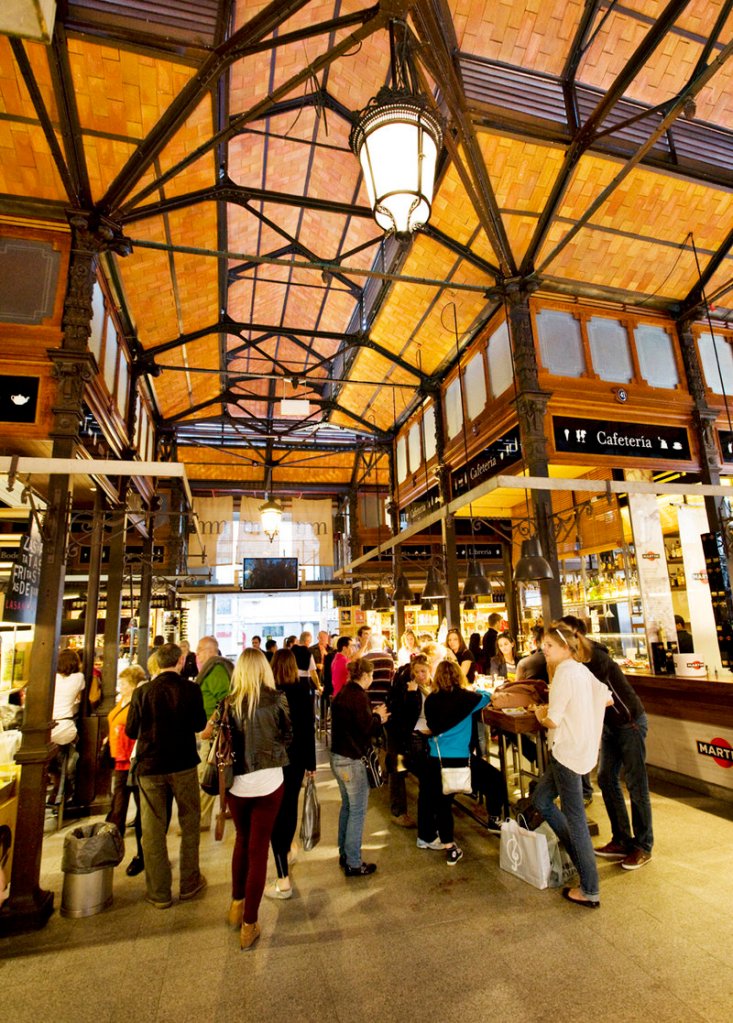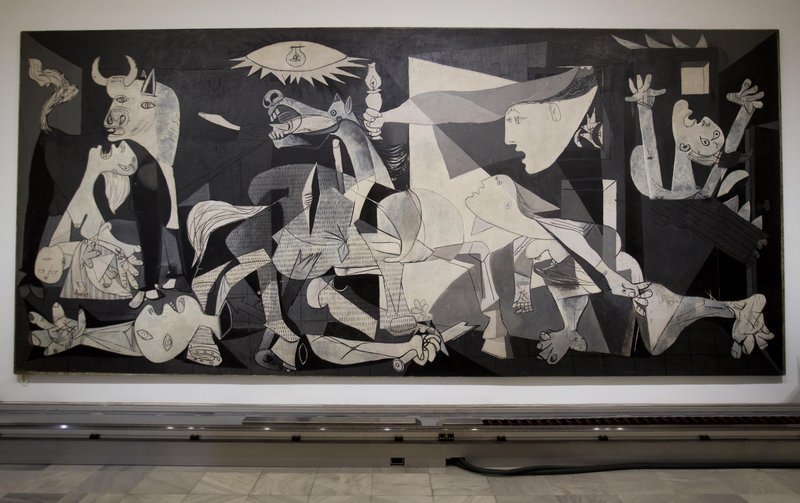MADRID – “Hey dad, listen! The music of ‘Un Chien Andalou,”‘ my son Corneel said casually, as we wandered the maze of hallways that make up the Reina Sofia museum.
Spain’s Luis Bunuel and Salvador Dali produced this masterpiece of European surrealism in 1929, but while I knew about the film’s infamous eye-slitting scene, the music had long escaped me.
It was only the opening afternoon of this father-son voyage of mutual understanding, and already the tables had turned.
If something seemed a given during the five-day trip to Madrid, it would have been that I, at 51, would have pointed anything pre-war out to him, rather than being upstaged by a 17-year-old with three times less life experience.
We followed the musical strains through the hot August air into a video room where indeed the old black-and-white movie flickered.
And that set the tone for two guys traveling together to the benefit of both.
The plan had been hatched at short notice when my daughter, Clara, had to stay home for university study during high summer and my wife refused to abandon her. That left the family’s men to their own devices.
Instead of Barcelona, where Corneel’s beloved football is played, he proposed Madrid, seeking to please me since it was one of the few major European cities I’d never seen. What’s more, we were there in August, when Spain’s capital largely shuts down in the heat, leaving fine hotels well within affordable range.
Expecting a swelter, it was no more than plain hot. Immediately after ditching our luggage at the hotel, we settled under the trees of the adjacent Parque del Retiro, a spectacular expanse of greenery, water and air smack in the center of town that was once the private garden of the king.
From there, almost all of Madrid was within walking distance. And walk we would — first to the Reina Sofia.
It was not surrealism that enticed us there, but a single painting: Picasso’s “Guernica.” Often in total silence, we spent half an hour going through all the depicted torments of the 1937 bombing of the ancestral capital of the Basque country by German and Italian warplanes aiding Gen. Francisco Franco’s fascist forces.
Beyond the moral and political significance, the museum also makes the exhibit an artistic highlight by bringing together sketches and partial paintings to show in a timeline how all came to fit in one of the world’s greatest masterpieces.
So dark and somber was it that we had to squint when we finally faced the harsh afternoon light in the glass elevator bringing us back to the square below.
A tourist, though, shall not live by art alone. And Madrid has plenty of ephemeral diversions.
In Spain few are more pleasurable than those contained in these five letters: “Tapas” — those bite-size delights that can grease conversation from sundown till well past midnight. Another advantage is that they are a perfect conduit for Cava sparkling wine and Crianza and Reserva reds.
One night, we sped past that tourist trap, Plaza Mayor, and took refuge instead in the nearby covered market, Mercado de San Miguel, where locals and tourists mingle happily for gamba croquettes, marinated sardines and bacalao, or cod. No time to get bored as the older generation pushed the younger into some experimenting.
The ultimate goal however was something dad had ingrained on his tastebuds years ago, a gustatory delight as simple as it is exquisite. Jamon Iberico de bellota is ham from black Iberian pigs stuffed on acorns and cured, preferably for years.
Winding down from San Miguel through the old streets, the tabernas kept proliferating on the Calle de la Cava Baja until we settled on a bar called Goyo. Slivers of ham were sliced before our hungry eyes, and even after all these years it continues to amaze me how a tiny morsel of ruby red meat lined with off-white fat can pack such a punch.
And the way Corneel’s eyes were widening at the taste, I knew at once he felt the same. What more to do than wash it down with some hearty Reserva and walk back to the hotel through the balmy darkened boulevards, giddy on so much gastronomic luck?
Morning came with its own dietary challenges. Hotel breakfast just didn’t seem adventurous enough for real travelers, what with the sun out and Corneel’s craving for fresh churros, fried dough served in sausage-shape sprinkled with sugar.
Madrid, though, specializes in late nights, not early mornings, and it took us until our final day in the city to find a terrace that served the real thing — crispy churros. It wasn’t half bad.
Most days though, we settled in the shade of a patio outside a chic hotel on a major boulevard to catch up on sports news in the local papers. Even if our Spanish is elementary, we do know our football (not the American game, of course, but what Europeans call soccer), and through pictures combined with key words and names of players we dissected the fortunes of Real Madrid and Barcelona from the fiercely partisan pages.
Time flew and off we went, one day to Toledo, another to Segovia to discover Spain’s historic treasures. In Toledo, we walked the endless stairs to the historic center high on a hill, only to find, once we’d made the ascent, that we could have taken an escalator. But Toledo’s history was worth the climb, as were the joys of Segovia, where we overdosed on Romanesque churches and — finally — on the crispest churros enjoyed literally in the shadow of a massive Roman aqueduct.
All too soon, the return trip was upon us. We already had jamon for the rest of the family wrapped airtight for travel, leaving us time for one last classic, Spain’s biggest house of paintings, the Museo del Prado.
We only gave Rubens, Velazquez and El Greco cursory glances: We were here for Francisco de Goya. We skipped most of his courtly portraits and made a beeline for “The Naked Maja” — a brazen statement of eroticism in the late 18th century in which the nude model eyes the painter as a centerfold might eye the photographer two centuries later.
More impressive still was the darkness and horror of “The Third of May 1808” execution of rebels and his “Black Paintings” series, including the crazed vision of Saturn devouring one of his sons.
We had started with Picasso’s “Guernica,” and now the trip had come full circle. But we could not leave on such a soul-wrenching note.
Then we noticed amid the blackness one painting that featured only the small head of a dog emerging from a dark space into swirls of yellow-brown light. Was “The Dog” drowning, swimming to safety, something else entirely? Who knows? The ambiguity was mystifying, the purpose a riddle, the quality of the masterpiece beyond question.
After coming to Madrid seeking to understand each other better as father and son, we came away just less than perfect: Neither one of us could make sense of that little dog’s head.
Send questions/comments to the editors.



